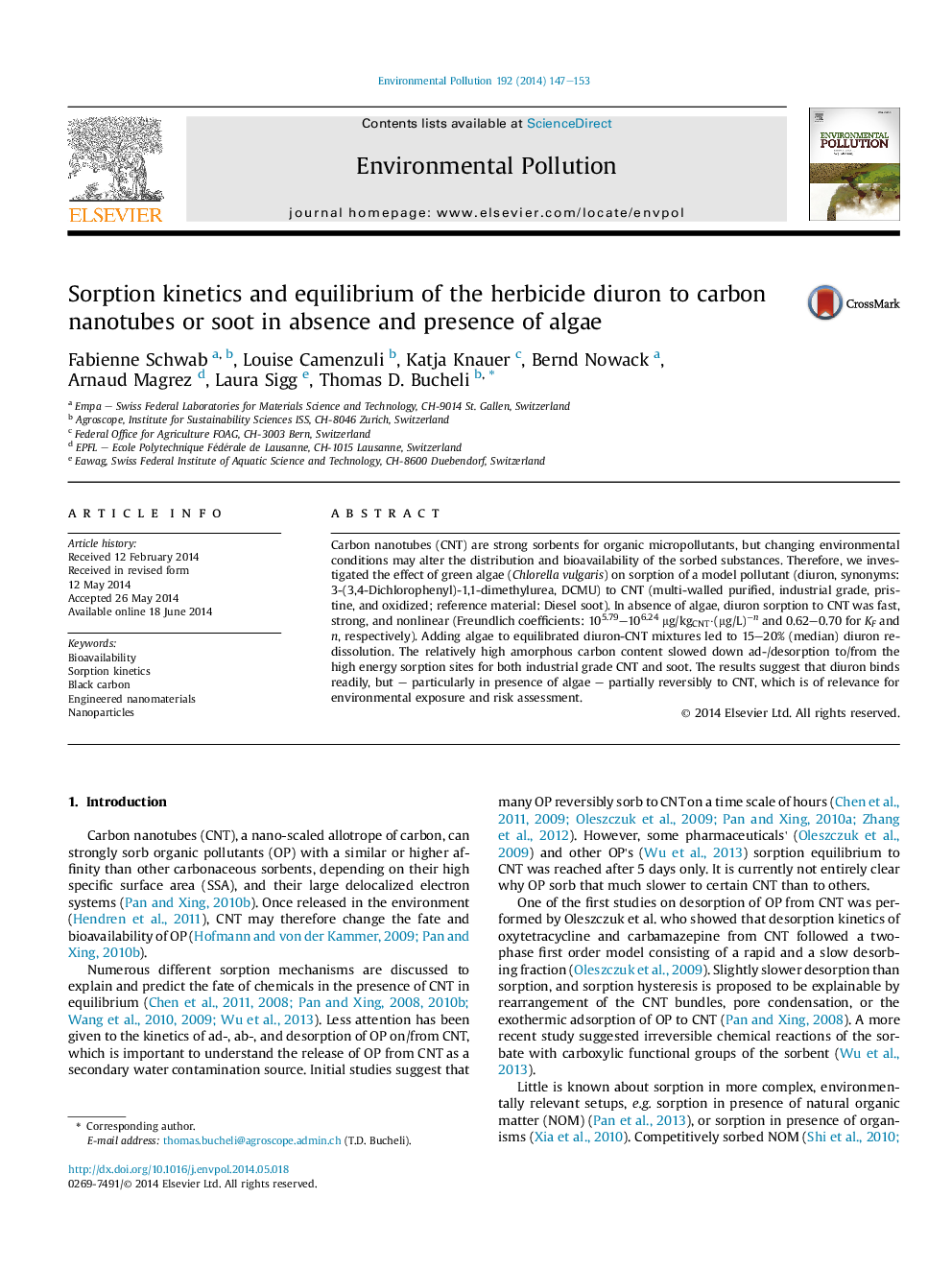| Article ID | Journal | Published Year | Pages | File Type |
|---|---|---|---|---|
| 4424350 | Environmental Pollution | 2014 | 7 Pages |
•We quantified the sorption of an herbicide to CNT in presence of green algae.•The herbicide diuron readily and strongly sorbed to CNT.•After adding algae, 15–20% of the bound diuron re-dissolved from purified CNT.•Unpurified, industrial grade CNT did not release diuron and behaved like soot.•Amorphous carbon impurities were the most likely explanation for this behavior.
Carbon nanotubes (CNT) are strong sorbents for organic micropollutants, but changing environmental conditions may alter the distribution and bioavailability of the sorbed substances. Therefore, we investigated the effect of green algae (Chlorella vulgaris) on sorption of a model pollutant (diuron, synonyms: 3-(3,4-Dichlorophenyl)-1,1-dimethylurea, DCMU) to CNT (multi-walled purified, industrial grade, pristine, and oxidized; reference material: Diesel soot). In absence of algae, diuron sorption to CNT was fast, strong, and nonlinear (Freundlich coefficients: 105.79–106.24 μg/kgCNT·(μg/L)−n and 0.62–0.70 for KF and n, respectively). Adding algae to equilibrated diuron-CNT mixtures led to 15–20% (median) diuron re-dissolution. The relatively high amorphous carbon content slowed down ad-/desorption to/from the high energy sorption sites for both industrial grade CNT and soot. The results suggest that diuron binds readily, but – particularly in presence of algae – partially reversibly to CNT, which is of relevance for environmental exposure and risk assessment.
Graphical abstractFigure optionsDownload full-size imageDownload as PowerPoint slide
